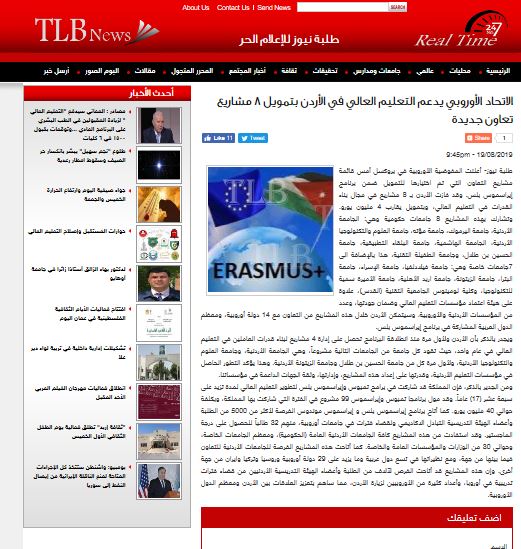Capacity-building projects in the field of higher education are transnational cooperation projects, based on multilateral partnerships, primarily between higher education institutions from Programme and eligible Partner Countries (Programme guide) .
The aim of these projects is to support eligible Partner Countries to:
- modernise, internationalise and increase access to higher education
- address the challenges facing their higher education institutions and systems
- increase cooperation with the EU
- voluntarily converge with EU development in higher education, and
- promote people to people contacts, intercultural awareness, and understanding.
This is carried out in the context of two key policy documents and the policy defined by four complementary financing instruments;
Erasmus+ provides the opportunity for organisations from eligible Partner Countries, mainly higher education institutions (HEIs), to promote cooperation through actions that:
- improve the quality of higher education and its alignment with labour market needs,
- improve the level of skills in HEIs through new education programmes,
- strengthen the capacity of management, governance, and innovation, as well as internationalisation,
- build the capacity of national authorities to modernise their own higher education systems, and
- foster regional integration and cooperation across different regions of the world.
Capacity building projects typically focus on one of three main activities:
- curriculum development activities
- modernisation of governance and management of HEIs and systems
- strengthening of relations between higher education and the wider economic and social environment
Organisations can choose from two types of projects:
- Joint projects, which aim to support organisations from partner countries (i.e. through curriculum development, modernisation of management, etc.), and
- Structural Projects, which aim to strengthen higher education systems and promote reforms at national and/or regional level.
Organisations intending to apply must do so as part of a consortium. For projects addressing one Partner Country, a consortium must in principle include three Programme Countries, as well as:
- at least one HEI from each Programme Country taking part
- at least three HEIs from the Partner Country
- at least as many Partner Country HEIs as Programme Country HEIs
For projects addressing more than one Partner Country, at least two eligible Partner Countries and at least three Programme Countries must be involved. A consortium must, in principle, include:
- at least one HEI from each Programme Country taking part
- at least two HEIs from each Partner Country taking part
- at least as many Partner Country HEIs as Programme Country HEIs
Eligible Partner Countries are those in Regions 1-4 and 6-11. Projects involving Region 8 (Latin America) must involve at least two Partner Countries from the Region and projects involving the Russian Federation (Region 4) must involve at least another Partner Country from a different region. All Structural Projects must also include the Ministry responsible for education in the Partner Country.
A consortium must be led by an applicant, an organisation that submits the proposal on behalf of the partners and is responsible for the overall implementation of the project. The applicant must be:
- a higher education institution (ideally from a partner country),
- an association or organisation of higher education institutions, or
- in the case of Structural Projects, a legally recognised national or international rector, teacher, or student organisation.
Organisations from Libya, Syria, and the Russian Federation cannot act as applicants.
Project partners may either be higher education institutions or any public or private organisation active in the labour market or in the fields of education, training, and youth. These organisations can participate as:
- Full Partners who participate actively in the project under the authority of the applicant, and
- Associated Partners, who contribute to specific tasks or activities.
Associated Partners are not considered part of the consortium and, as such, cannot benefit from any financial support from the project.
- What else should you know?
Capacity-Building projects typically focus on three main activities:
- curriculum development activities
- modernisation of governance and management of Higher Education Institutions and systems
- strengthening of relations between Higher Education and the wider economic and social environment
Projects typically last 2 or 3 years and the grant varies between EUR 500,000 and EUR 1 million. It can be used to cover staff costs, travel costs, costs of stay, equipment and sub-contracting activities.
Higher Education Institutions from Programme Countries must possess a valid Erasmus Charter for Higher Education.
Projects targeting regions 1, 2 or 3 may also include a Special Mobility Strand for students and staff to study or train, or teach abroad. However, not all projects will receive funding for the mobility strand and, therefore, the mobility strand should not hamper the overall achievement of the project objectives.
Applications should be submitted online under one of the annual calls for proposals published by the Education Audiovisual and Culture Executive Agency.
Apply for KA2: Capacity Building in Higher Education 2020
